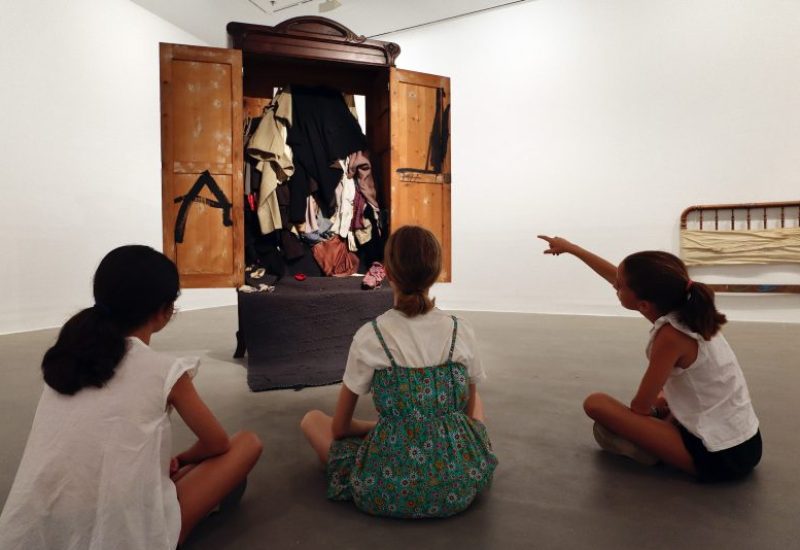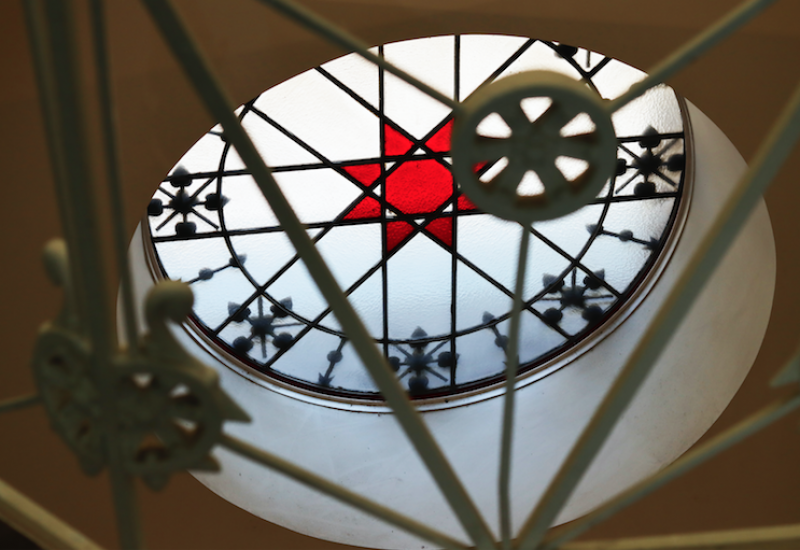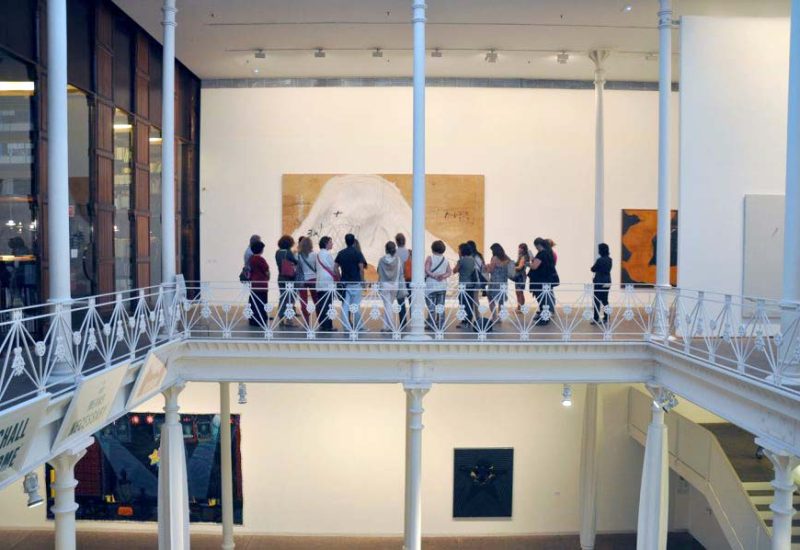Painting can be everything. It can be a burst of sunlight in the middle of a gust of wind. It can be a storm cloud. It can be the step of a man on the road of life, or – why not? – a foot stamping the ground as if to say ‘enough!’ It can be the soft, hope-filled air of early morning, or the bitter, stale smell emanating from a prison. The drops of blood from a wound, or the song of an entire people in the blue or yellow sky. It can be what we are, what is today, now, what will always be. I invite you to play, to look attentively. I invite you to think.
Antoni Tàpies (January 1967), The Game of Looking. Cavall Fort, nº 82.
Antoni Tàpies encourages us to look at the world with an open, critical and reflective perspective. This is why the Education Department considers his work to be a strong starting point for an educational process.
At the Museu Tàpies, we understand education as a process for the production of knowledge through art, which takes place collectively, for as philosopher Marina Garcés has stated, education is an invitation to think together.
Faced with the crises of out time, we are called to reaffirm the museum’s social function and the political character of educational processes: art and education enable us to question the reality around us as we approach unknown and unexpected realities, encouraging relationships and bonds In this sense, we are fully aware of the model of Catalan libertarian pedagogies, such has the Modern School of Francesc Ferrer i Guàrdia, where pedagogical action and social change go hand in hand.
In the words of Juana M. Sancho, education should allow students and teachers to ‘find their own meaning, get to know themselves, get to know each other and the world around us, not to exploit it at their convenience, but to respect it and to promote the common good’.
Art is not educational in itself. The pedagogical value of art lies in the educational processes that are organised in relation to it. The Education Department conceptualises actions and projects addressed to a diverse public, upholding the museum as an inclusive, welcoming space. The reason is that the museum must potentially include everyone, and should be a collective space able to assume the requirements and contributions of the community.










